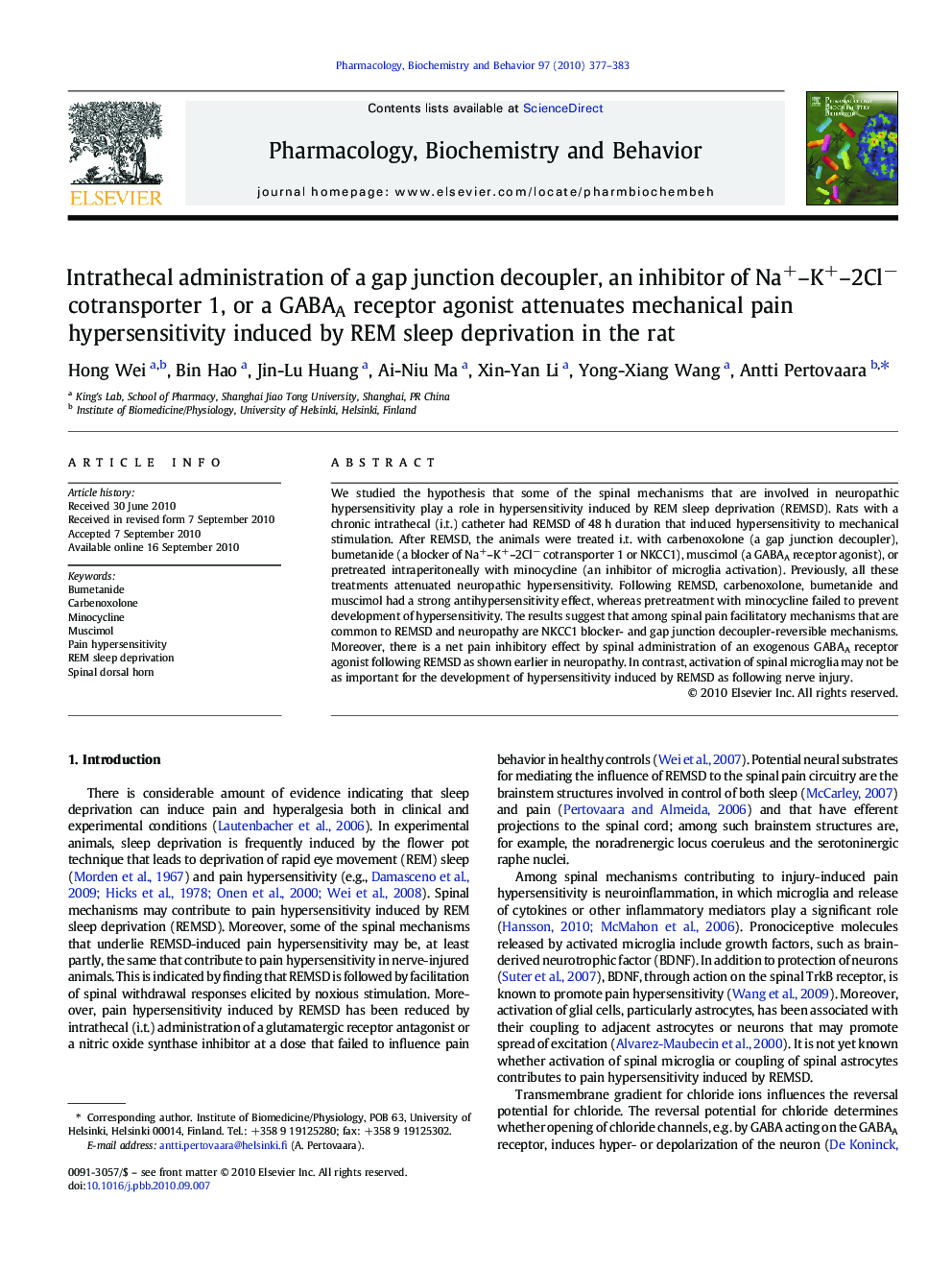| Article ID | Journal | Published Year | Pages | File Type |
|---|---|---|---|---|
| 2013169 | Pharmacology Biochemistry and Behavior | 2010 | 7 Pages |
We studied the hypothesis that some of the spinal mechanisms that are involved in neuropathic hypersensitivity play a role in hypersensitivity induced by REM sleep deprivation (REMSD). Rats with a chronic intrathecal (i.t.) catheter had REMSD of 48 h duration that induced hypersensitivity to mechanical stimulation. After REMSD, the animals were treated i.t. with carbenoxolone (a gap junction decoupler), bumetanide (a blocker of Na+–K+–2Cl− cotransporter 1 or NKCC1), muscimol (a GABAA receptor agonist), or pretreated intraperitoneally with minocycline (an inhibitor of microglia activation). Previously, all these treatments attenuated neuropathic hypersensitivity. Following REMSD, carbenoxolone, bumetanide and muscimol had a strong antihypersensitivity effect, whereas pretreatment with minocycline failed to prevent development of hypersensitivity. The results suggest that among spinal pain facilitatory mechanisms that are common to REMSD and neuropathy are NKCC1 blocker- and gap junction decoupler-reversible mechanisms. Moreover, there is a net pain inhibitory effect by spinal administration of an exogenous GABAA receptor agonist following REMSD as shown earlier in neuropathy. In contrast, activation of spinal microglia may not be as important for the development of hypersensitivity induced by REMSD as following nerve injury.
Research Highlights►Spinal gap junctions contribute to hypersensitivity after sleep deprivation. ►Spinal NKCC1 contributes to hypersensitivity after sleep deprivation. ►Spinal GABAA agonist reduces hypersensitivity after sleep deprivation.
